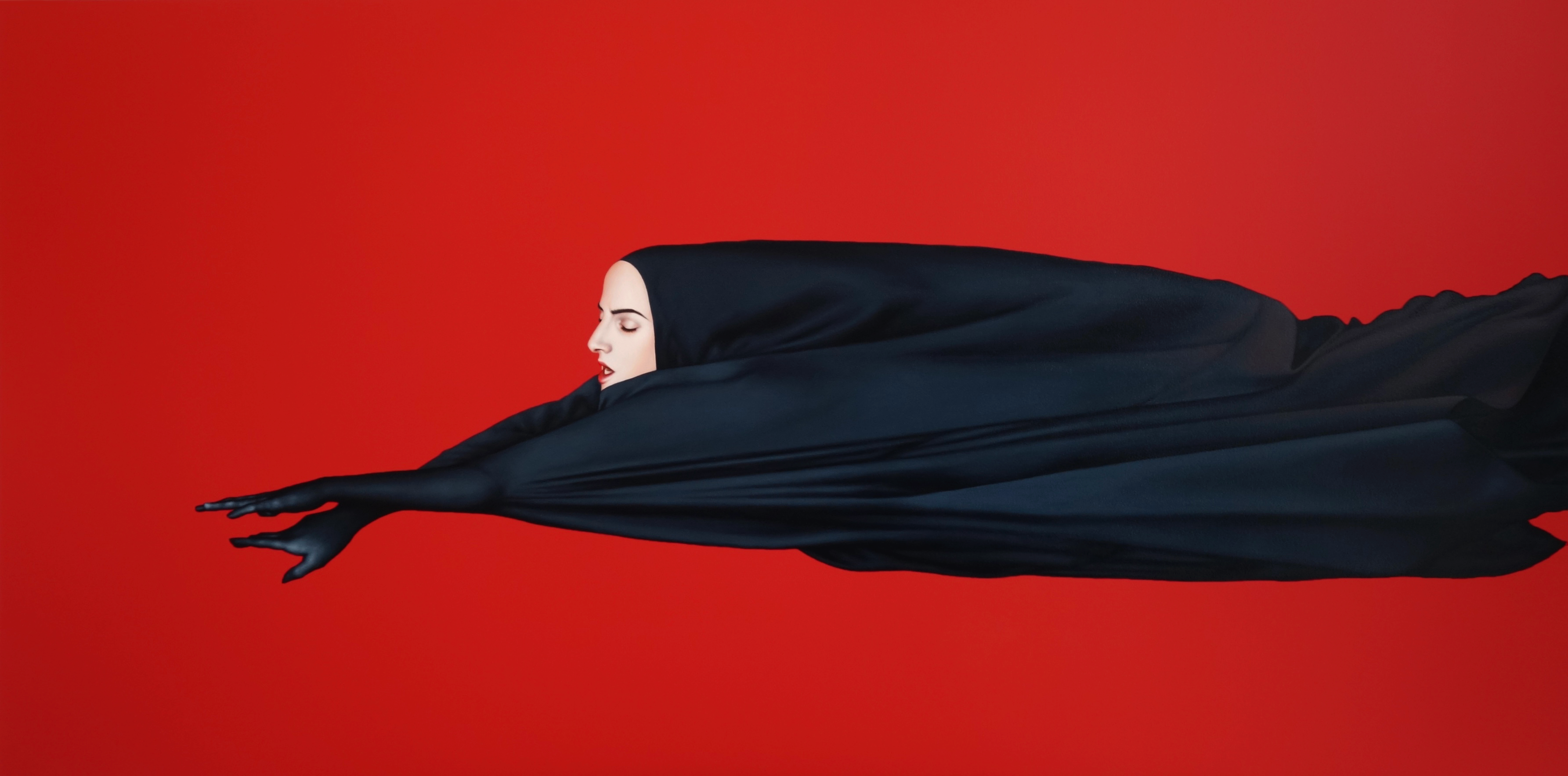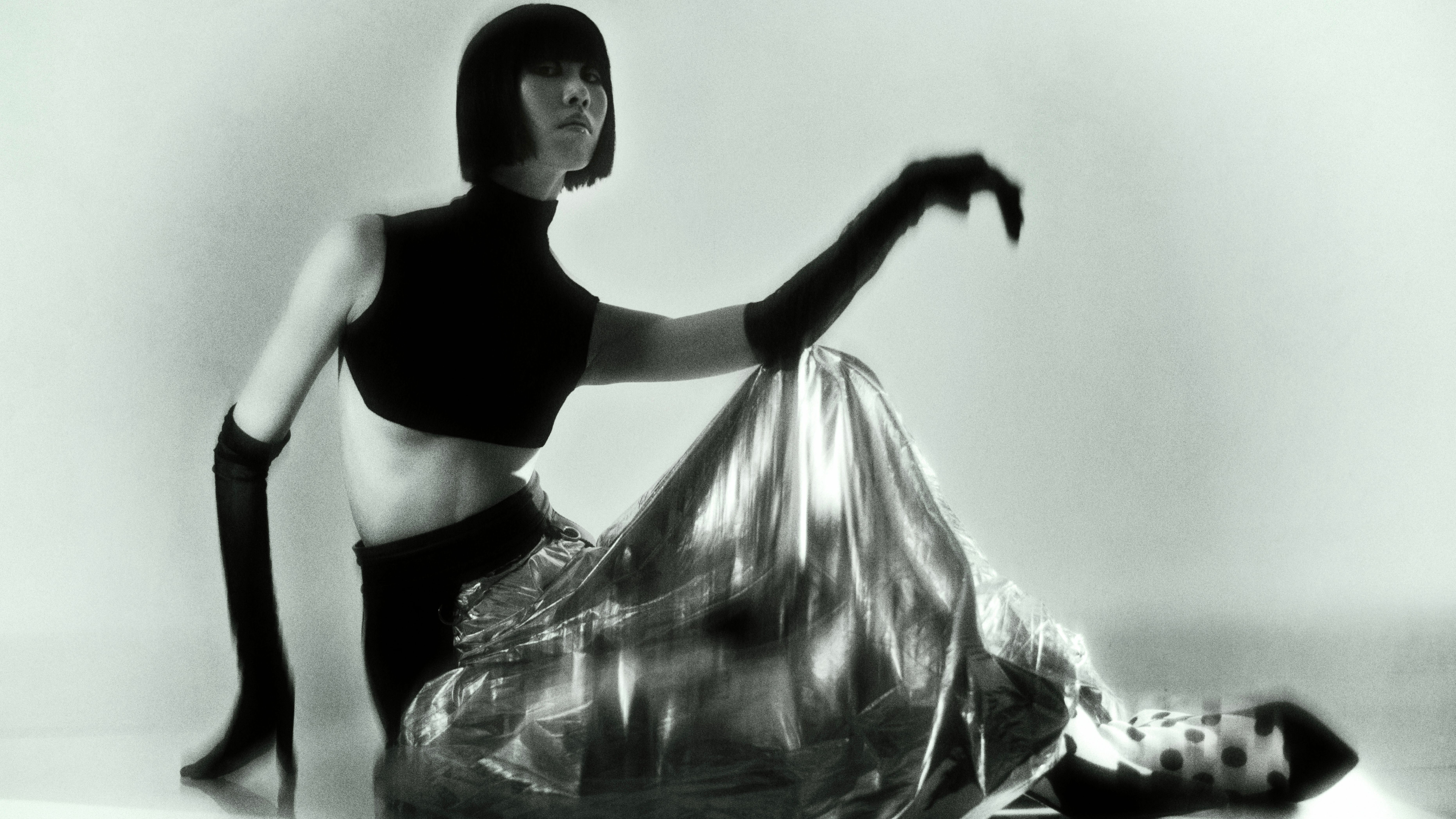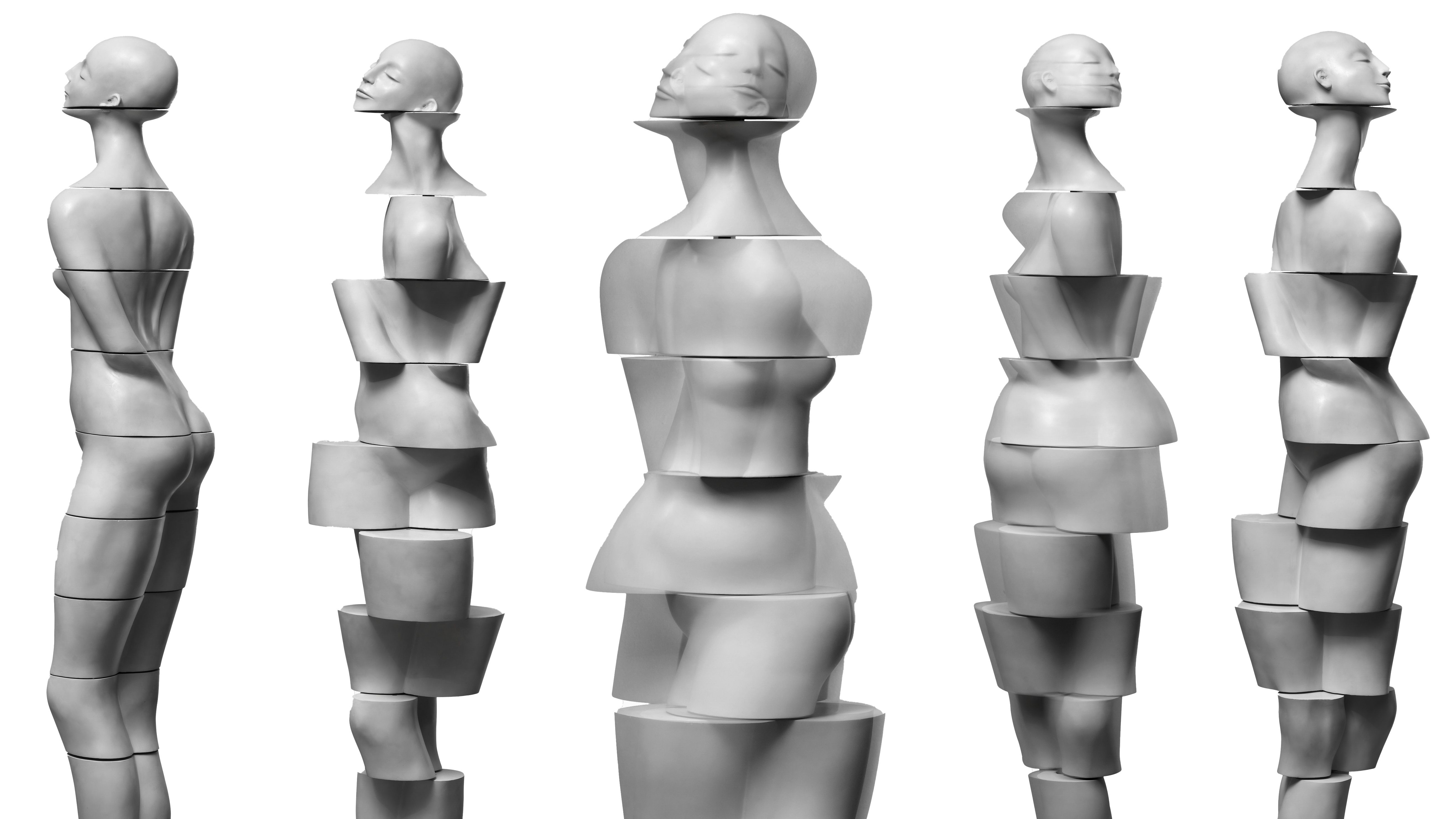Samo Shalaby paints worlds where excess meets precision and beauty is laced with disillusion. His canvases, dense with cultural references and symbolic detail, defy linear narrative. Instead, they open portals as dreamlike visions where reality and fiction blur, and every element becomes a clue to decipher. Beneath the opulent aesthetic, every gesture is deliberate, every figure layered with meaning. For Shalaby, painting is an act of remembrance, a personal language that holds contradictions, heritage and desire. His work invites us to slow down and look deeper, beyond the surface, into the symbol.
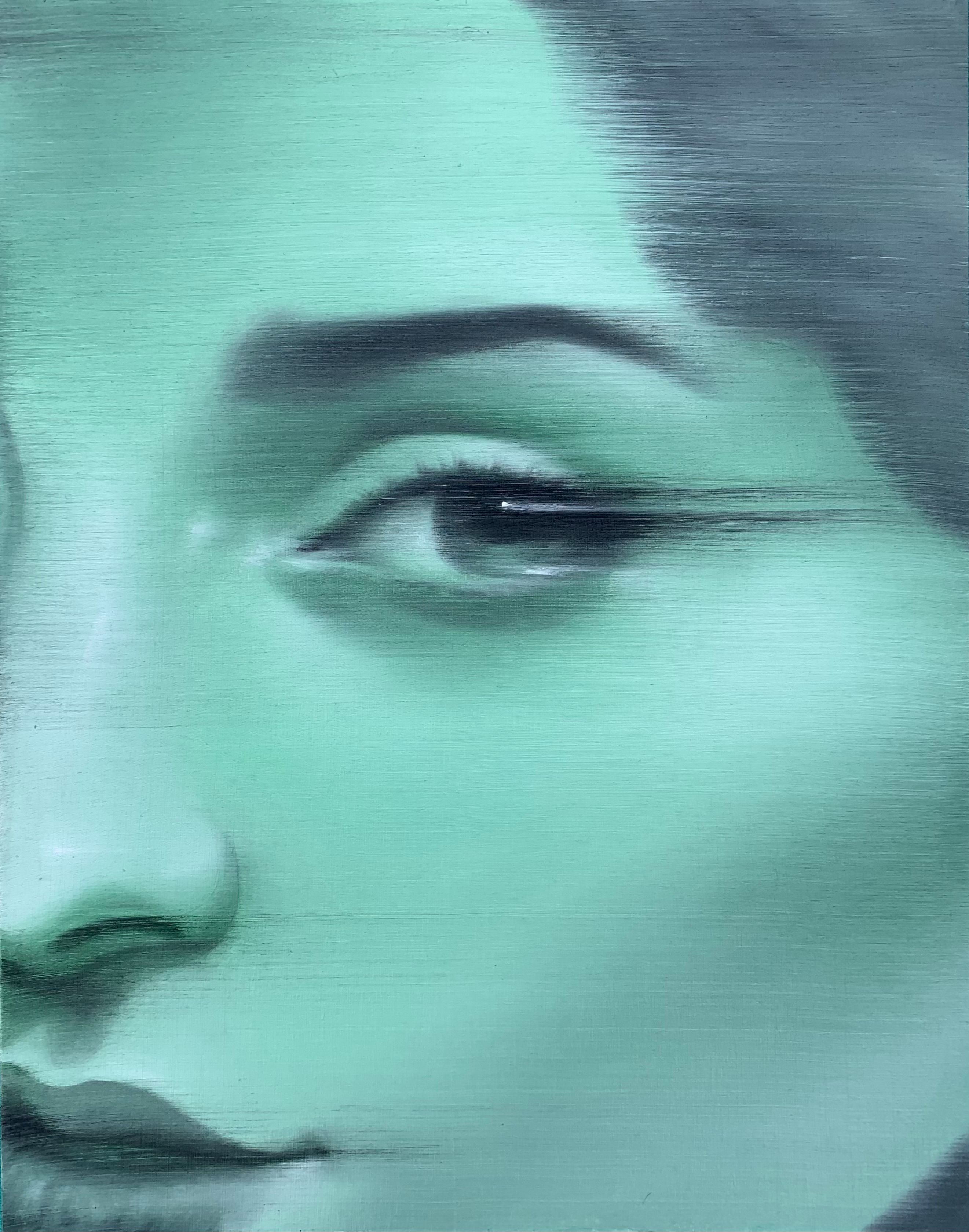
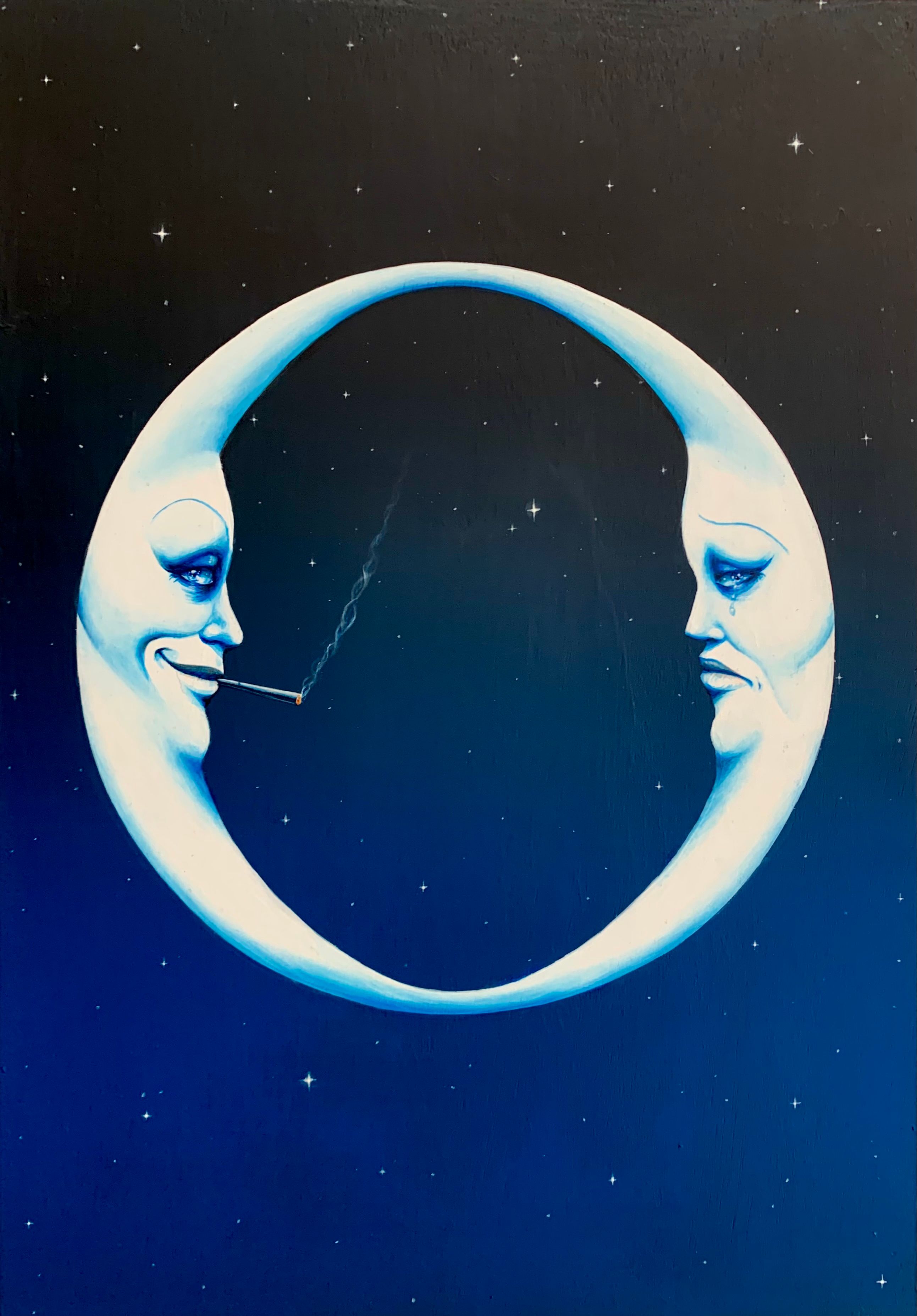
Being Egyptian-Palestinian means carrying two rich and complex heritages. How does this dual identity shape your artistic vision, and in what ways has it helped or challenged you in building a language that feels truly your own?
Something I’ve always loved about Arab culture is how much we pour into our homes. We stay put, rooted. We spend so much time indoors, surrounded by family, that our spaces become an extension of who we are—a reflection of our character, history, and spirit. I grew up in a house in Cairo that shaped me in profound ways. It had leather walls, antiques, instruments, etched furniture, murals painted by my mother, a gothic library, and, of course, an art studio. It was a kind of sanctuary—a richly layered, unapologetically maximalist playground—a blend of tradition, excess, and resilience. It mirrored the spirit of our culture: grounded yet extravagant, resilient yet tender, a bit kitsch but always full of warmth and memory, seen through a lens of opulence and history. I think my work finds its roots in that kind of environment—a world of in-betweens, where old and new, beauty and chaos, East and West, collide to form something deeply personal. Being both Egyptian and Palestinian has been a layered experience, full of contradictions and challenges, but it’s also what pushes me to develop a visual language that bridges these worlds while carving out a space uniquely my own. It’s about honoring where I come from while carving my own path forward.
Symbolism runs through much of your work, weaving together visual elements and hidden meanings. What role does symbolism play in your practice? And how much do you leave to the viewer the freedom, or perhaps the responsibility to decode what is concealed?
Symbolism is essential to my work because it’s my way of embedding layers of meaning without giving it all away—a bit like leaving pieces of an unfinished puzzle. I draw from personal experiences, cultural references, and historical motifs, turning objects, gestures, and subtle details into allegorical fragments that hold weight and nod to certain ideas. Even though I am quite intentional with my storytelling and the clues I leave behind, I always leave enough room for the viewer to bring their own interpretations, to find their own connections and narratives. I like the idea that a piece can shift and evolve as more eyes encounter it, that it can mean different things to different people. It’s about setting up a framework but letting the audience fill in the gaps, adding their own layers of meaning to the work. That kind of dialogue keeps the work alive and allows the piece to evolve beyond my original intent.
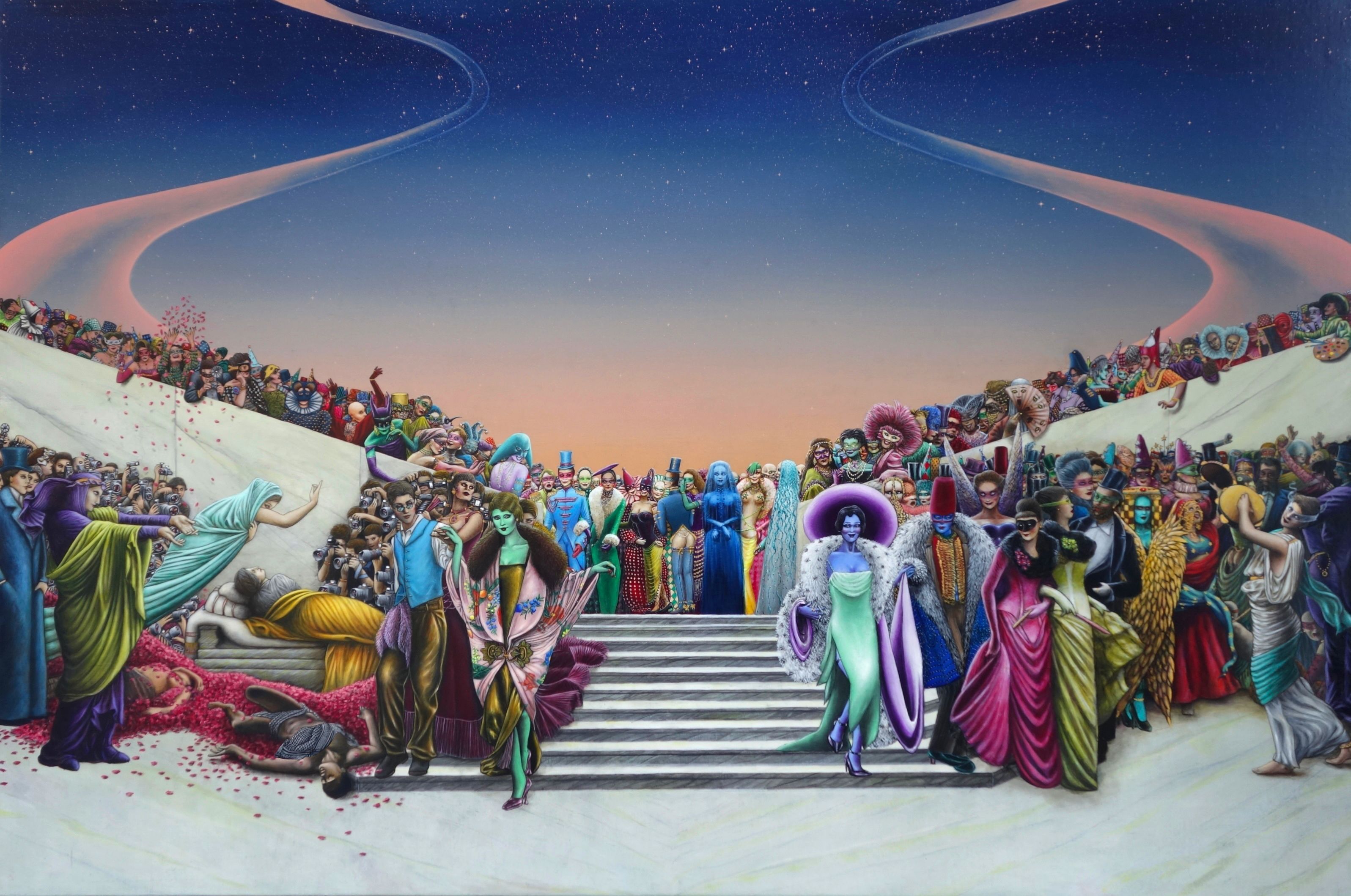
In “The Masquerade”, you stage an unsettling balance between ceremony and discomfort, where masks appear more revealing than protective. You’ve mentioned Eyes Wide Shut as one of the influences behind the atmosphere of the characters. How do fiction and reality, collective gaze and hidden truth, intersect in this work?
The Masquerade” is a portal to a universe of contrasts, where marble meets rose petals and couture dances with chaos. It’s a narrative of perpetual dichotomies—a waltz between truth and fiction, life and death, and ignorance and awareness, where characters from personal narratives intertwine within a realm of duality. On the left side of the painting, paparazzi swarm a public event, capturing a funeral that unveils the world’s belated reactions, where all masks inevitably slip, and true colors surface. On the right, a party unfolds, where curiosity and discomfort cloak the attendees, seemingly oblivious or willfully ignorant of the suffering just beyond their reach. Draped in the finest fashions, characters tread their heels over bodies covered in Kuffiyehs and rose petals, each character a vessel for hidden truths, rendered through allegorical gestures and symbolism. This piece reflects the unsettling juxtaposition of spectacle and suffering that defines our contemporary moment, softly echoing a political core. I completed this painting while watching the Met Gala unfold alongside the horrors of the Palestinian genocide—a jarring, almost grotesque experience, swiping between red carpets and scenes of devastation—a stark reminder of how cruel, unjust, and absurd our world can be. It’s a reflection of that unsettling contrast, a memento of the disconnect between what we choose to see and what we choose to ignore.
Many of your works feel like entering a lucid dream, where every detail carries symbolic weight yet remains elusive. What does surrealism mean to you, and what does it allow you to reveal that reality alone cannot express?
Surrealism, to me, is a means of exploring the subconscious and the unseen, a way of revealing truth through fiction, reality through a mask. Like looking through rose-tinted glasses, where I can confront darker or more taboo subjects in a form that feels less direct, yet often more honest. Through metaphor and symbolism, I can allude to deeper truths, creating spaces where the impossible becomes tangible. It allows me to delve into themes that are difficult to articulate in literal terms, providing a visual language for the complexities of identity, emotion, and experience. It’s also a way to publicly unveil deeply personal issues while maintaining a sense of privacy, blurring the line between raw revelation and concealment. In this way, surrealism is both a shield and a mirror—a space where I can confront the unknown while remaining humbly cloaked. Think of it like standing in public—not entirely exposed, but draped in something sheer. From a distance, you appear one way, but up close, the layers, flaws, and textures of your inner world become clearer to those who choose to look.
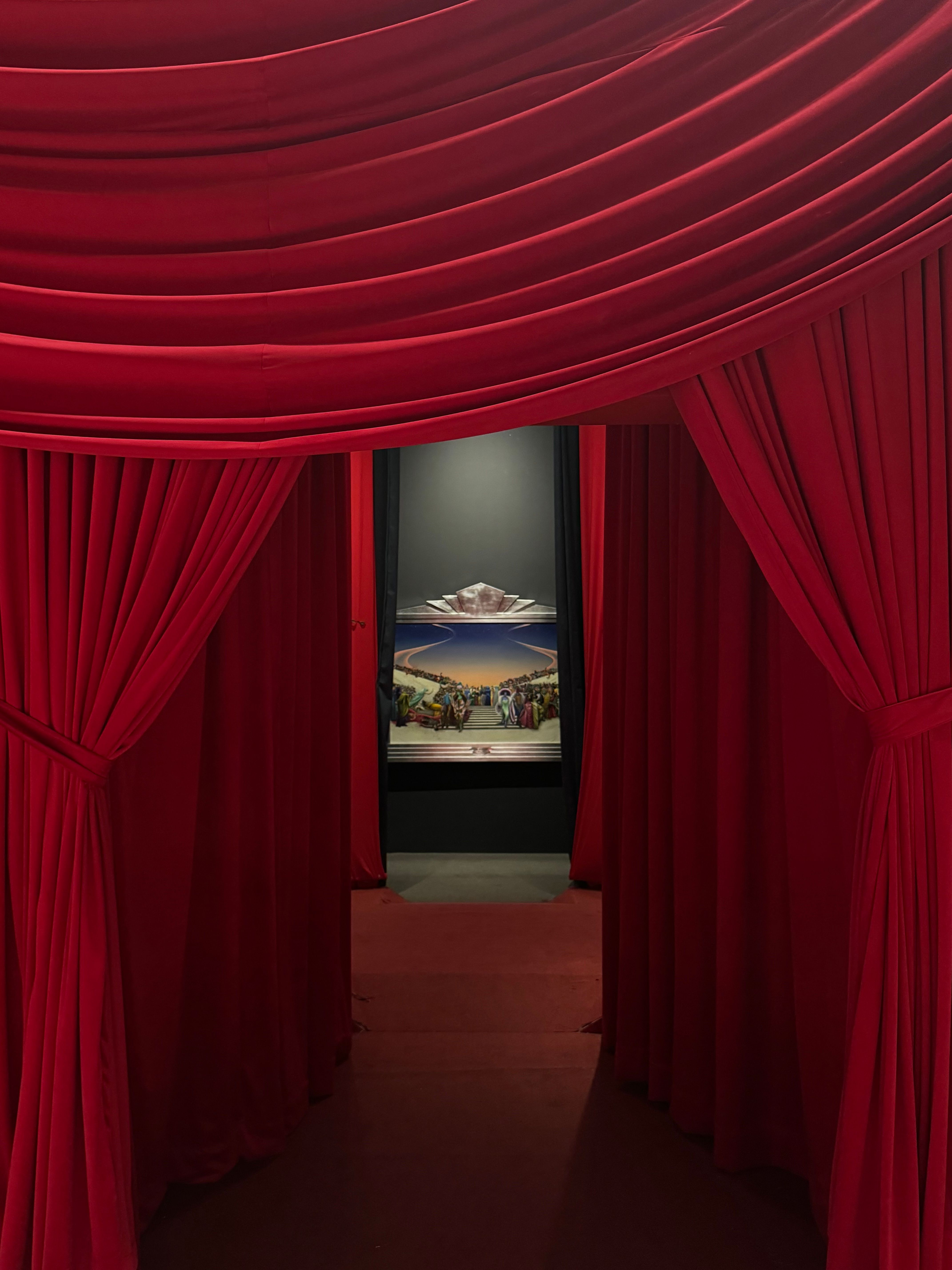
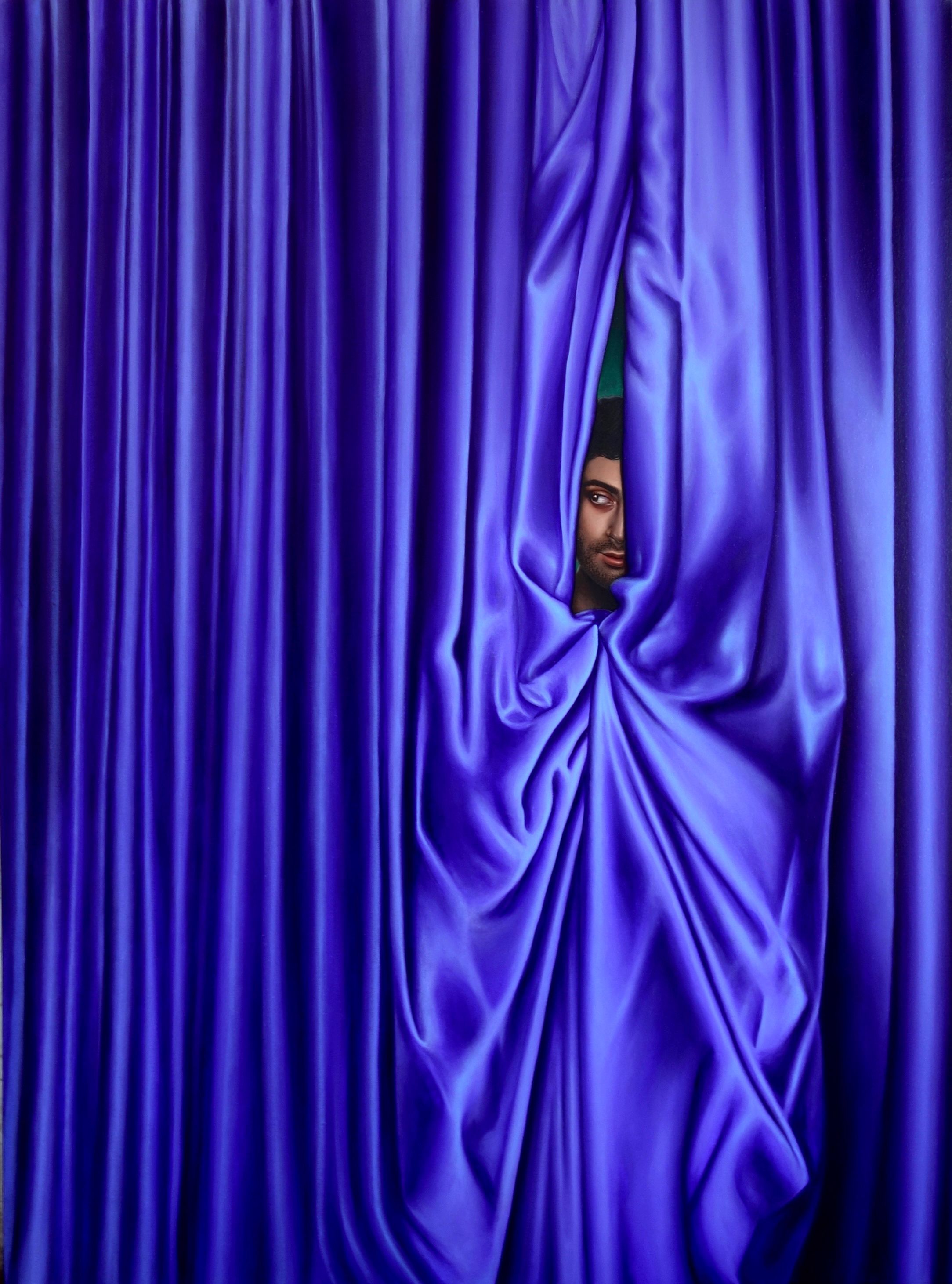
Is uncertainty ever part of your process when you paint?
Yes and no. I’m not the kind of artist who simply picks up a canvas and starts painting, though sometimes I think it could be fun. I’m meticulous by nature and extremely intentional with my work. I sketch endlessly, plan compositions down to the smallest detail, and mix color charts in advance. I have pages and pages in my sketchbooks dedicated to each character, refining their look, symbolism, and the stories they carry. I like to have control over my work, maybe because it feels so elusive in other parts of life. But no matter how much I plan, painting has a mind of its own. There are always ‘happy accidents,’ chemical reactions, or spontaneous shifts that surprise me, pushing a piece in an unexpected direction. Over time, I’ve learned to embrace this uncertainty, to let the process lead me when it demands it. It’s a balance between dominance and intuition, a kind of dance that can lead to more layered, authentic outcomes, pieces that feel closer to my original intent, yet somehow richer for the detours.
Color in your work seems to go far beyond aesthetic choice. In “The Lavender Hour”, for instance, purple dominates the scene in an almost hypnotic way. What does that tone represent for you, and how do you approach color in your creative process?
Each time I paint, my color choices become more intentional, woven deeply into the context of each piece. For me, color is a language rather than an afterthought, carrying layers of symbolic weight. In The Lavender Hour, for instance, the dominant purple hue draws inspiration from Oscar Wilde’s later years in Rome, specifically his diary entries referencing his taboo “purple hours.” I chose this color to evoke a blend of cheekiness, loneliness, and melancholy, reflecting the twilight of Wilde’s life. The composition itself is rather simple, yet layered with subtle nuances, maintaining a slightly political undertone. The title also nods to the 1960s term “Lavender Menace,” adding another layer of historical context around identity, rebellion, and defiance. Color often serves as a starting point for my paintings, anchoring the emotional tone and guiding the narrative. I select pigments with intention, considering their historical and symbolic associations to ensure they align with the core themes of each work.
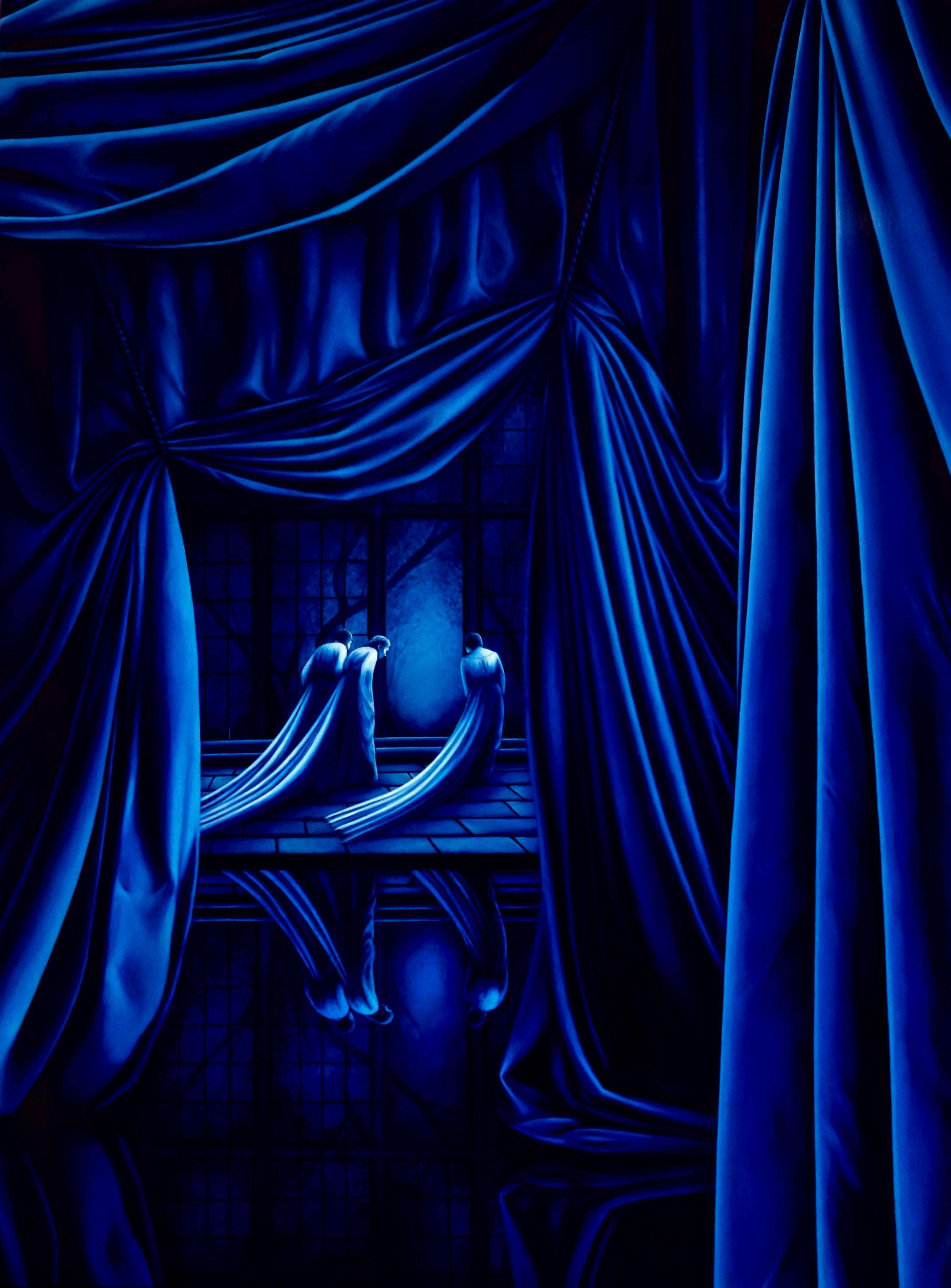
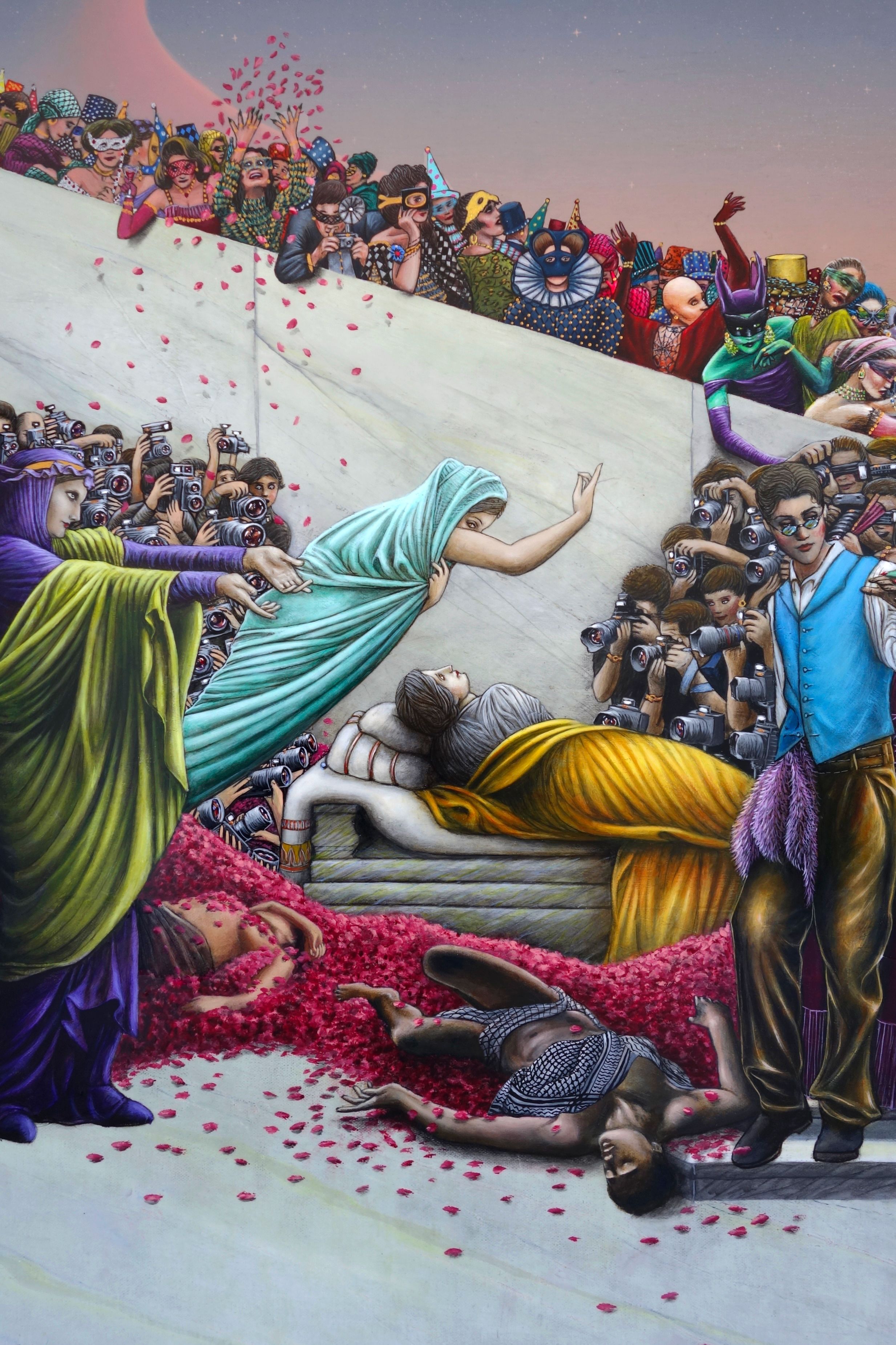
Many of your works seem to emerge from an inner image, almost a vision. What happens in the moment when an idea takes shape inside you?
My creative process often begins with a fleeting image or feeling, something that resonates deeply and demands exploration, a physical conjuring. This initial spark can come from a dream, a piece of music, a scent or a sound, the feel of a fabric, or a historical reference. Sometimes it’s a single moment of intense inspiration, like a flash of an idea that I scribble down or sketch to capture its initial energy before it slips away. From there, I move into a phase of research, layering meaning and context, letting the idea evolve organically. I sketch endlessly, refining and reworking until the vision feels fully formed in my mind. It’s a process of distillation, where the original spark is both honored and transformed through the act of creating. In the end, it’s about translating that initial, often intangible feeling into something more concrete, yet still alive with the mystery that first inspired it.
We live in a world where technological tools offer more and more ways to make art. Yet you continue to choose your hands, material, the physical act of making. What drives this choice, and what value does direct contact with the process hold today?
I personally believe no computer, robot, or any technology could ever compete with the touch of a human hand combined with the intuition of the human mind. Yes, it’s not as instant as AI might be, but that’s precisely the point. I’m someone who values the time-honored techniques, the weight of tradition, and the imperfections that come with physical creation. There’s something profoundly human about the tactile nature of painting, the drag of a brush, the texture of paint, the unpredictability of materials. It’s a ritual, a deeply personal act of bringing something into existence, and I believe that energy becomes embedded in the piece itself, radiating in person when it’s viewed. You can feel it, sometimes even taste it, a kind of spiritual exchange that I don’t think digital art will ever fully replicate. Direct contact with the work creates a physical and spiritual bond that can't be replicated by digital tools. You can stand in front of a piece and think, I really made this. It’s about preserving that human touch in art, a sense of presence and intimacy that I fear might become increasingly rare in an overwhelmingly digital world. While I can appreciate the possibilities of digital tools, I think it’s the very saturation of technology that makes traditional, hands-on making feel even more vital and irreplaceable today.
How do you sense that a work has reached its final form?
Honestly, they never truly feel done. A part of me is always thinking, I should adjust that expression, fix that tiny detail, or glaze that section. Even when I see them hanging in a gallery, I catch myself cringing at things I somehow missed. But once the piece is varnished and ready to leave my studio, I have to accept that it’s “finished”, at least for now. Some works settle more naturally than others, and the adjustments I still think about are usually technical rather than narrative. But sometimes, I reach a moment of clarity, where the work aligns perfectly with the intended emotion and story, and is painted up to my standards. Taking a break, even for a week or two, can offer that fresh perspective, letting me see the piece as a whole rather than a collection of flaws. But to be completely honest, there have been times when I’ve varnished a painting, shipped it, exhibited it, brought it back, and then painted over the varnish just to revarnish it again. So, in a way, a painting is never truly finished, just temporarily released.
